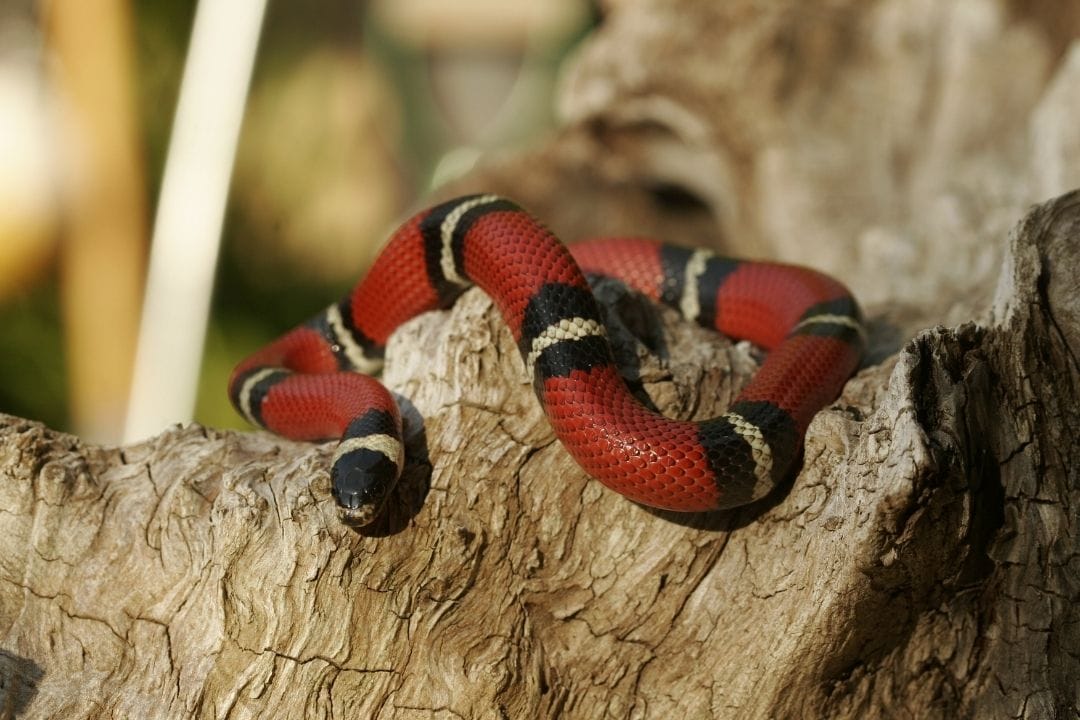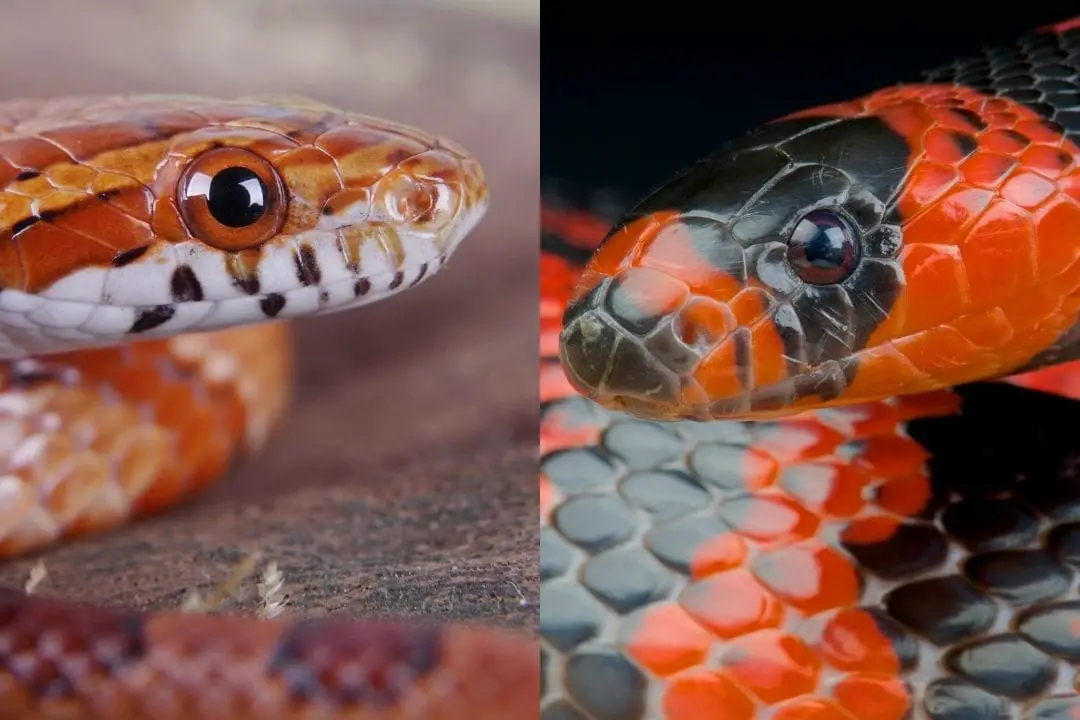Milk snakes are one of the most popular species in captivity, thanks to their great looks, temperament, and low maintenance requirements. They do not grow as large as some other species, making them straightforward to look after.
But, just how big do milk snakes get?
Milk snakes typically grow to 14 – 69 inches in length, but their maximum length and size will be based on genetic factors and care throughout their lives. Some milk snake species grow to be much larger than others, measuring around 7 feet in length.
While milk snakes are smaller than many other snakes, they can still grow to be quite a handful. Whether you are choosing between milk snake species or are wondering when your beloved milk snake will need a larger enclosure, we’ve gathered everything you need to know about the growth of different milk snakes.
Everything you need to know about caring for Milk Snakes in captivity:
Read our Milk Snake Care Sheet (Complete Guide)
How Big Are Milk Snakes?
Milk snakes can measure between 14 and 69 inches or between 3 and 5 feet in length, but some milk snake subspecies grow around 7 feet in length. It’s been reported that within the United States and Canada, milk snakes living in captivity grow to around 51 inches.
Male and Female Milk Snake Sizes
Generally speaking, male milk snakes can grow slightly larger than females, but they are typically within the same size ranges since they are alike concerning physical features and sexual aspects. The predominant factor concerns their genetic traits.
Milk Snake Average Size by Subspecies
Even though numerous milk snakes boast unique and alluring features, there are a few species that are most commonly housed as pets.
| Milk Snake Subspecies | Average Adult Size |
| Black Milk Snake | 4.6 – 7 feet |
| Eastern Milk Snake | 2 – 4 feet |
| Honduran Milk Snake | 4 – 7 feet |
| Pueblan Milk Snake | 2 – 4 feet |
| Nelsons Milk Snake | 36 – 60 inches |
| New Mexico Milk Snake | 18 – 24 inches |
| Sinaloan Milk Snake | 35 – 39 inches |
| Red Milk Snake | 28 inches |
| Louisiana Milk Snake | 16 – 24 inches |
Some milk snake subspecies are not as common to own as household pets, and their sizes can differ slightly from popular milk snake pet types.
| Milk Snake Subspecies | Average Adult Size |
| Guatemalan Milk Snake | 60 inches |
| Andean Milk Snake | 60 inches |
| Mexican Milk Snake | 30 inches |
| Jalisco Milk Snake | 42 inches |
| Blanchard’s Milk Snake | 42 inches |
| Conant’s Milk Snake | 46 inches |
| Dixon’s Milk Snake | 42 inches |
| Central Plains Milk Snake | 24 inches |
| Ecuadoran Milk Snake | 72 inches |
| Pale Milk Snake | 30 inches |
| Pacific American Milk Snake | 42 inches |
| Atlantic Central American Milk Snake | 60 inches |
| Sinaloan Milk Snake | 48 inches |
| Smith’s Milk Snake | 42 inches |
| Stuart’s Milk Snake | 46 inches |
| Utah Milk Snake | 30 inches |
| Coastal Plains Intergrade Milk Snake | 30 inches |
Genetics
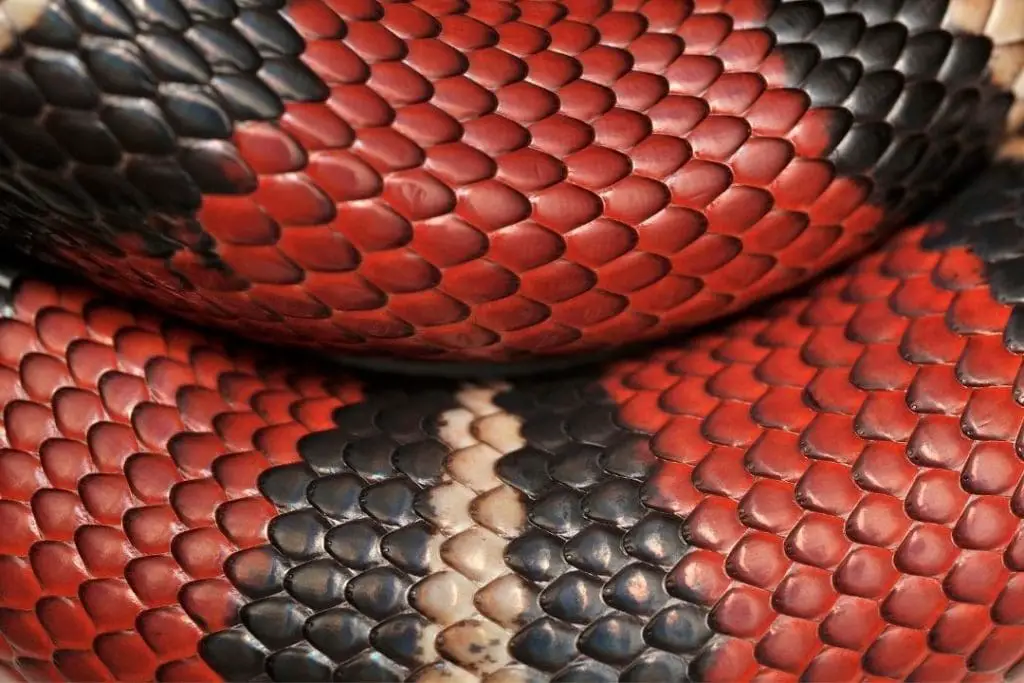
Other than the influence that the subspecies of milk snake will have on size, genetics play a rather large influential role. Generally, the offspring’s growth potential will be affected by the size of the parents. Thus, a large and healthy milk snake would likely give birth to hatchlings with a higher probability of growing to larger sizes.
How Long Does It Take For Milk Snakes To Grow?
When milk snakes are born, they typically measure around 6 inches long. However, some milk snakes can measure around 12 inches in length when they are hatchlings, depending on the subspecies and genetic factors.
How Fast Do Milk Snakes Grow?
Milk snakes grow rapidly in the first stages of their lives, particularly during the first few months. Similarly to humans, milks experience growth spurts when they are babies and adolescents. But, growth rates will take a decline and balance out as they near maturity, and they will only grow a couple of inches every few months until they reach their growth limitations. Once they reach maturity, their size will be maintained with proper care.
How Long Does It Take To Reach Maximum Size?
It takes approximately 3 years for most milk snakes to mature and grow to their full size, but genetics and subspecies’ traits also influence this. Some milk snakes can grow to their maximum length within 2 years with proper care, while others can take up to 4 years to reach their full size.
What Influences Milk Snakes’ Growth Rate?
The care provided while living in captivity will greatly influence how they grow. Caregivers must ensure that milk snakes are provided with optimal living environments and care routines, particularly concerning feeding habits.
How Often They Eat
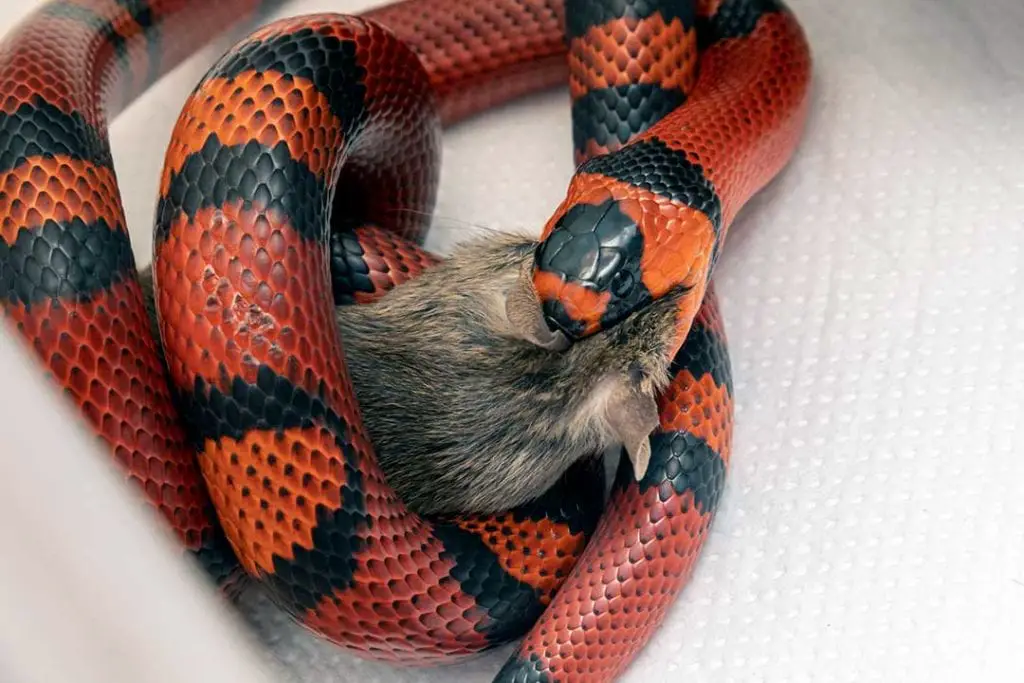
When living in captivity, milk snakes need to be fed more frequently when they are babies, as they need much more nourishment to support their rapid growth spurts during this time. Once they reach maturity, milk snakes will be perfectly happy being fed once every one or two weeks.
That being said, milk snakes who eat more than the average amount may have a higher chance of growing faster and larger than average. In a study conducted by students, a group of milk snakes was fed the traditional once-a-week meal, while some were fed twice a week.
None of the studied milk snakes were provided with any additional nourishment or supplements. They were all provided with the same habitat to ensure all aspects of the study could not tamper with the results. Shockingly, it was found that the milk snakes that were fed double the average meals grew double in size compared to the group receiving one meal a week.
The size increase did not solely concern the milk snakes’ length, however. Although there was a notable increase in the length of these milk snakes, there was quite a drastic increase in the milk snakes’ diameter around the mid-section. Thus, it could be said that overfeeding your milk snake will not result in healthy and large snakes.
Overfeeding your milk snake can lead to disproportional growth, which can shorten its lifespan over time and cause tremendous pain. It may be a great idea to provide your milk snake with slightly more food than average, but doubling up on food may be excessive. Ensuring that your milk snake gets fed when it needs to be will support growth and lead to strong, healthy, and larger milk snakes as they age.
The Nature of their food
The growth rates of any milk snake will closely rely on the number of calories they consume and the quality of food they are eating. Milk snakes who consume food that has higher calories, more vitamins and minerals, and more nourishment overall will have a much higher chance of growing larger than others within the same subspecies.
Many caregivers use nutritional supplements and vitamins, and they undoubtedly offer numerous benefits but are not always necessary in every case. Thankfully, milk snakes appreciate being fed a wide range of rodents and small prey, provided that the food supplied is never larger than the largest part of their mid-sections.
Why Isn’t My Milk Snake Growing Normally?
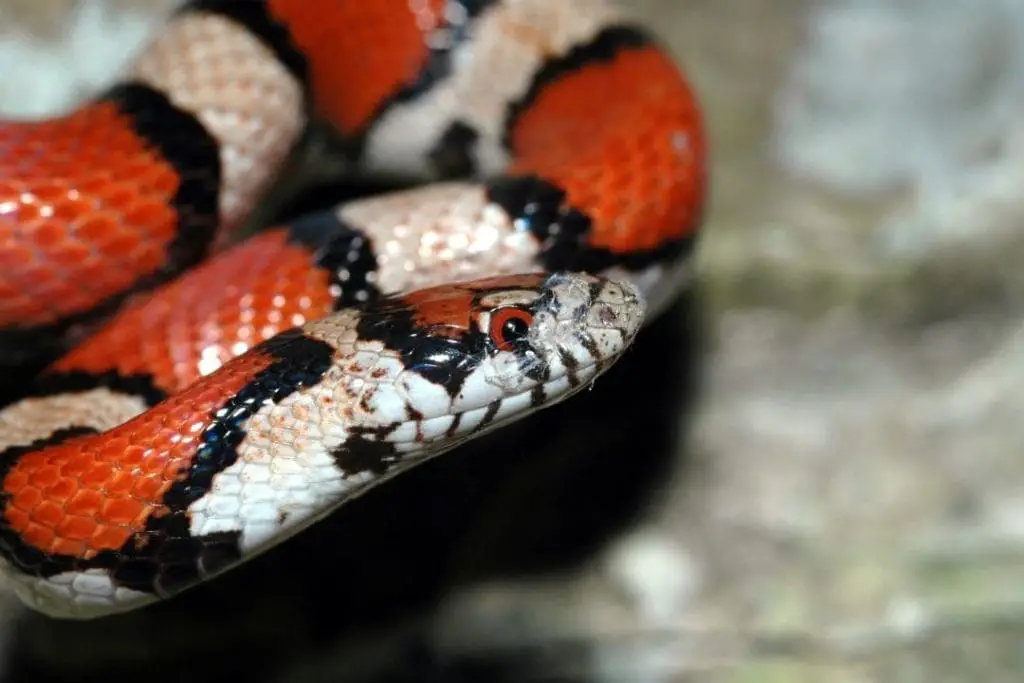
It can be distressing to discover your milk snake may not be growing as it should be. There are a few common reasons for milk snakes not reaching their full size other than genetic traits, some of which can be adapted to support better growth. This concerns their nutrition and habitat, but it is always advised to consult a vet when making changes to a milk snake’s diet or lifestyle.
Stress or Anxiety
Milk snakes can suffer from stunted growth if they are anxious or stressed. When milk snakes fall into negative mental states, they may refuse to eat and may experience various harmful side effects concerning their physical health and growth.
Milk snakes can grow to various sizes and lengths, depending on the subspecies and the traits of their parents. But, having a larger milk snake is not always necessary. What matters most is that your milk snake is happy, healthy, and growing as it should be. Always ensure your milk snake receives complete nourishment and environmental conditions to promote healthy growth rates throughout its life.
Sources


